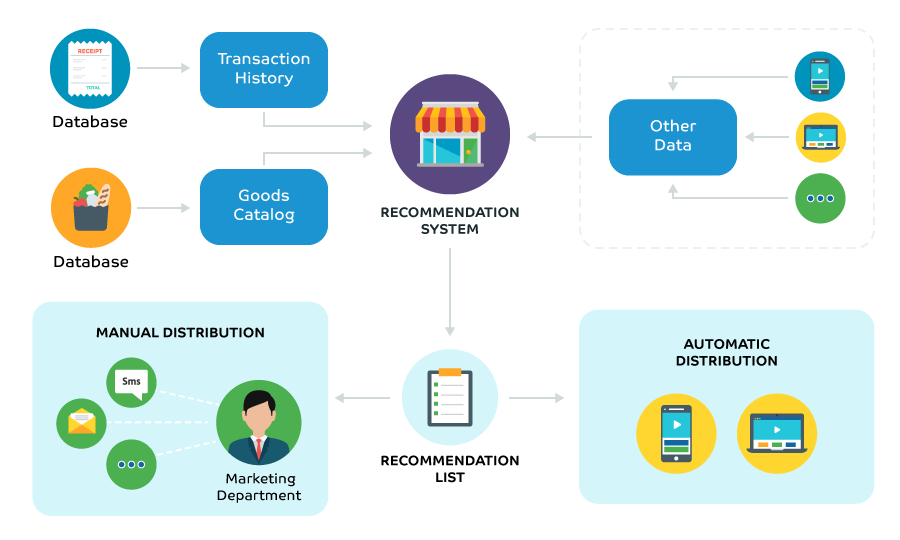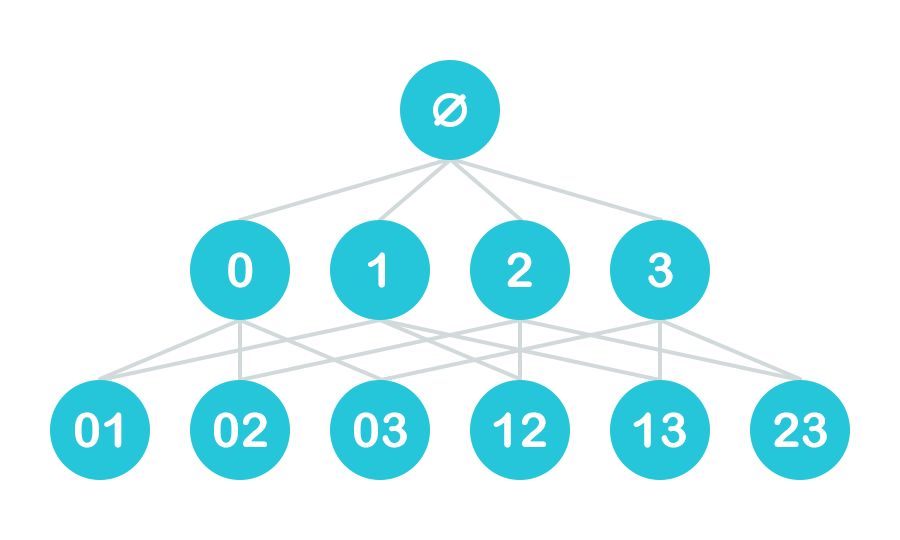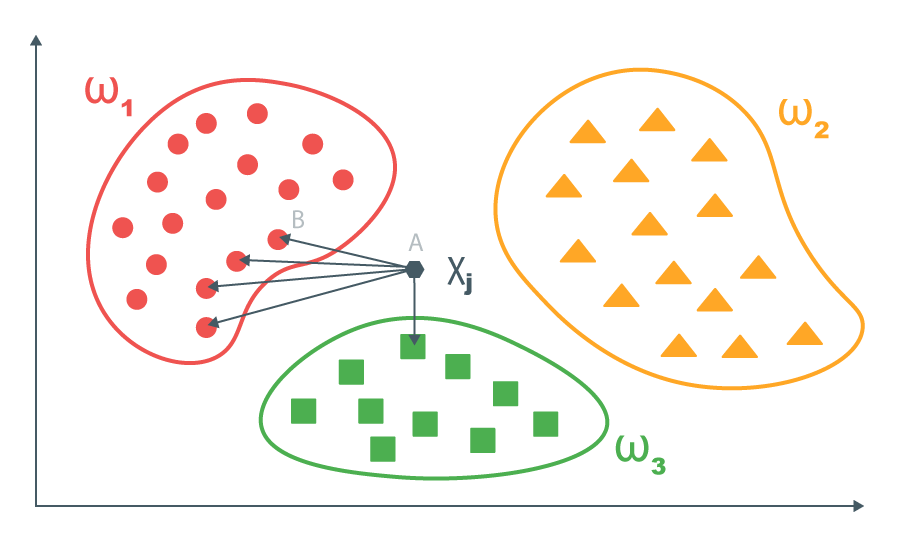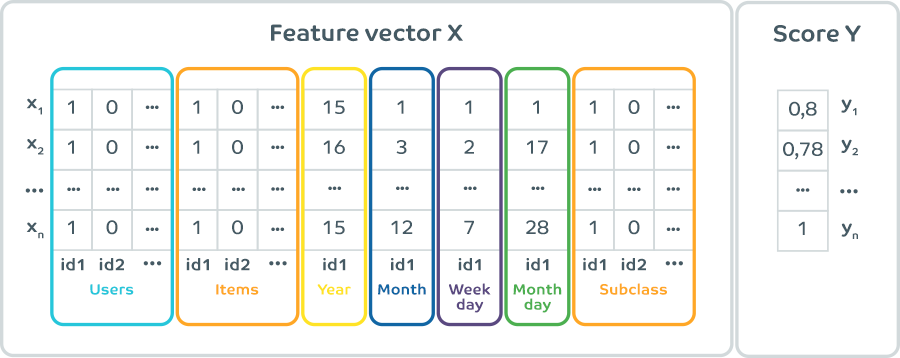Artificial Intelligence in Retail: Recommender System for Retailers

Founder & CEO at Azoft
Reading time:
Recommendation systems are widely and successfully used in many different industries — from social networks, healthcare, financial, and through to E-commerce shops. At the end of 2016 Starbucks announced that they’re planning to run an AI-based recommendation system in their cafes all over the world. Starbucks’ plans confirm where this is moving towards — predictive analytics coming to retail.
Recommendation systems allow preparing more relevant personalized offers. So you can get a freshly-baked muffin along with your morning coffee, and a customer in the nearest supermarket can get a recommendation of baby food as a good match for the diapers they bought.
Let’s delve into the details of how recommendation systems and artificial intelligence can help retailers boost sales:
Why Retailers Need AI Recommendation Systems
Let’s take the example of a grocery shop customer who decides to buy ingredients for dinner. Of course, at the end of the day, they don’t remember everything they planned to purchase in the morning. But it’s not a big deal, using the supermarket’s app on a smartphone they can make a list from the goods catalog. Right after adding pasta to the list and the app recommends them to buy a Bolognese sauce. The customer takes a sauce in the supermarket wondering why they never thought of it before. The recommendation works because others who chose pasta bought the Bolognese sauce as well.
Why does retail needs these recommendation systems? Here are just a few reasons:
- Increasing customer loyalty due to interesting offers tailored to specific customer needs
- Growth of purchases and therefore business profit
- Opportunity to meet customers and understand their needs better (segmentation of customers or goods)
- Broadening customer minds due to offering items that they never purchased before but that are relevant to their shopping basket
What Solution is Appropriate for Grocery Stores
Grocery stores in contrast with online shops cannot analyze customer responses to the offered good in real time. However, the majority of retail chains have loyalty programs and a database of receipts. This data can be enough to make specific recommendations for customers.
There are several implementation solutions for a grocery store. It depends on whether the grocery has an app and a website or not.

The approach chosen by a retailer doesn’t matter so much. The more important factor is various information about customers. Never too much data, right?
How Recommendation Systems Work
There are three main approaches to a recommendation system development: content-based approach, collaborative filtering, and hybrid approach.
For example, we developed a recommendation system for one of the main Russian grocery chains using collaborative filtering. The system parses similarity of profiles: customers similarity, goods similarity, and other content. Therefore the system recommends items similar to the purchased goods of the specific customer and other shoppers who have the same profiles.
In our project we use several models within the approach of collaborative filtering:
- Association Rules, specifically Bigram Rules, allow finding typical purchasing patterns.
Bigram rules find the most common pairs of purchases in the data set. It makes a rule with the pattern “if…, then…” based on the found pairs of purchases. Here is an example: “if a customer purchased a bread, then she will buy milk”.

Where 0, 1, 2, 3 mean a transaction for specific goods. For instance, 0 — a bread, 1 — spring onions.
- k-nearest neighbor method (kNN) allows finding k-nearest customers having similar market baskets and forming personal recommendations for them. It’s based on the hypothesis — similar customers purchase similar goods. The idea is simple: we define a market basket for every customer and calculate the distance between the specific customer and others having similar items in the market basket. Then we recommend customers to buy the goods purchased earlier by those customers with similar market baskets.

Where k — number of the nearest neighbors, Xj — a randomly selected customer, AB — a distance, and a distance measure is a metrical measure that defines similarity between objects — for example, cosine distance, Euclidean distance, etc.
- Factorization Machines allow finding unclear similarities in customer profiles. Every customer and every item are described by a specific feature set. If a customer feature set coincides with an item feature set, then this customer gets a recommendation for this specific item. The feature set is usually not obvious.
For example, an item A has the following description: [spicy, small pack, foreign, sweet, expensive]. The customer feature set coincides with the feature set of item A. So, this customer receives the corresponding recommendation.
The algorithm specifics include built-in counting of additional data such as an item type, a seasonal index, time of the purchase, a price, etc.

We developed the recommendation system targeted at growing the length of the receipt. And in the end it helped boost the sales of the retailers.
A personalized approach to customers is our future. Recommendation systems provide this approach. Thus retailers will appreciate recommendation systems when they try to use all their opportunities — starting from raising loyalty, a better understanding of customer needs, and up to increase profits.


Comments